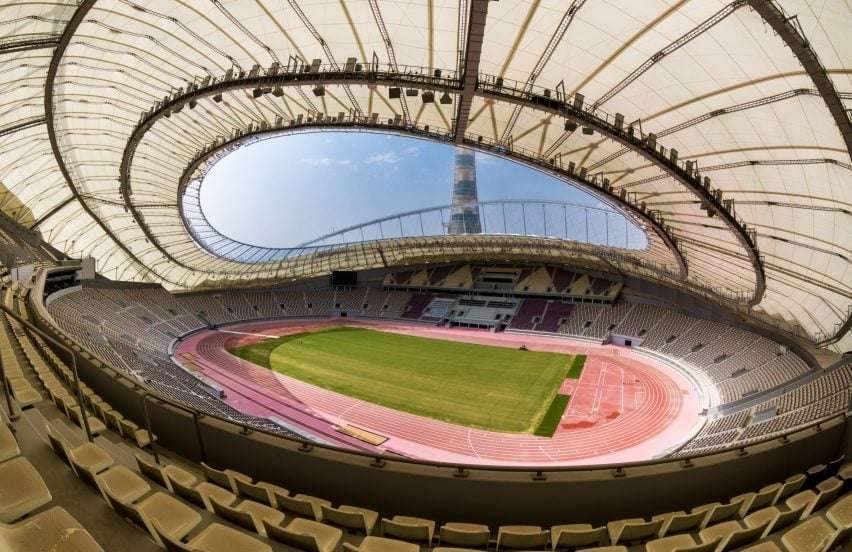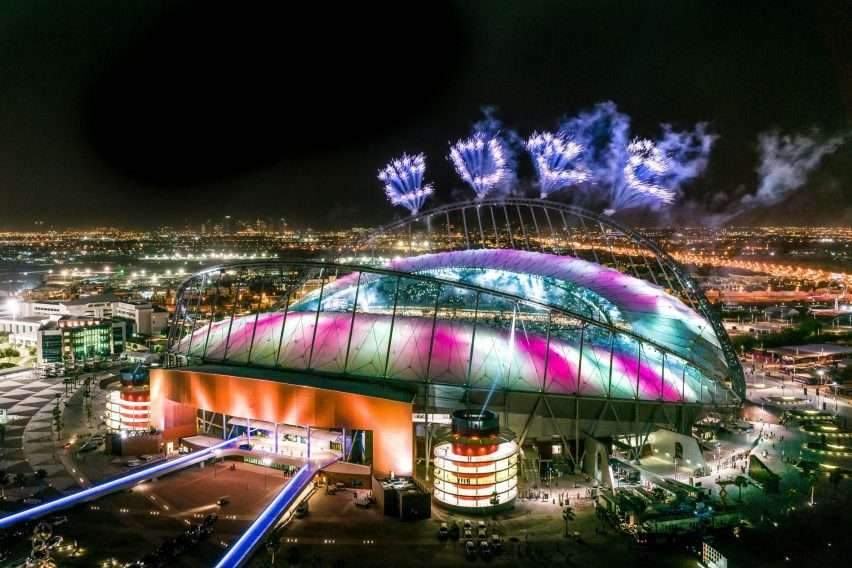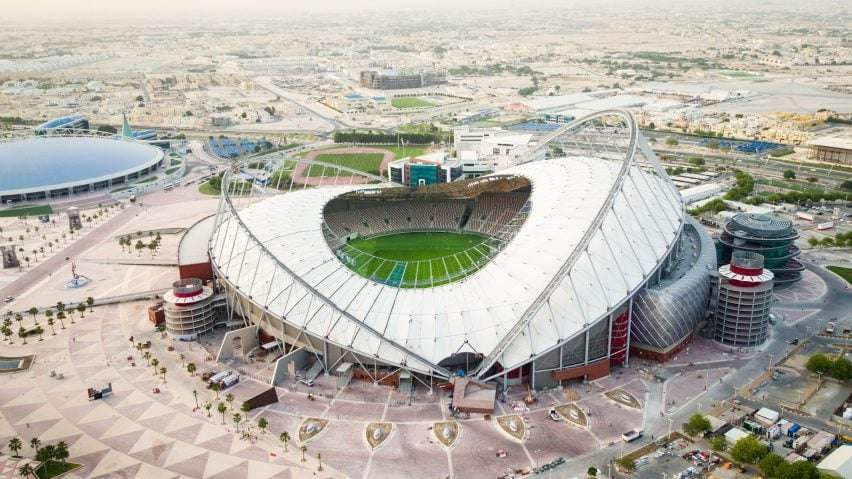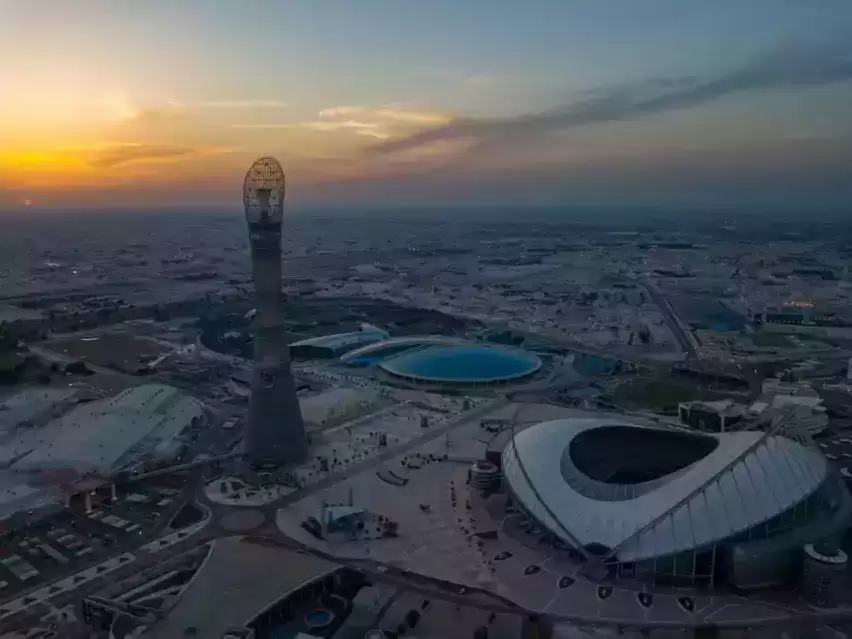The renovated Khalifa International Stadium in Doha will be used as one of eight stadiums that will host the upcoming 2022 FIFA World Cup in Qatar.
Renovation of the country’s national stadium
The Dar Al-Handasah office has renovated the country’s national stadium,
which opened in 1976.
So it can be used in the tournament starting later this month.
In 2017, the comprehensive renovation of Khalifa International Stadium was completed,
including the addition of 12,000 seats.
Therefore, the stadium’s capacity was increased to 40,000 seats, to meet FIFA’s hosting standards.
It was the first stadium ready for the 2022 FIFA World Cup and will host matches up to the third-place play-off.

Features of stadium renovation
Modifications to the stadium’s exterior include the addition of a canopy
that extends between the two arches above its roof which is the building’s most defining feature.
This was also introduced to help keep fans and players cool, in the stands and on the pitch during the tournament.
Together with the new and state-of-the-art cooling system in the stadium.
Other exterior changes to the building also include updating its facade,
which has been updated with contemporary digital lighting to animate at night during the tournament.
Inside, major changes to the stadium include the addition of 12,000 seats in its upper tiers,
as well as the introduction of a number of hospitality facilities.
Khalifa International Stadium has hosted a number of major events including the Arabian Gulf Cup,
since it opened in Doha 46 years ago.
The stadium also hosted the Asian Games and the World Championships in Athletics.

Stadium location
The stadium is located 10 kilometers from downtown Doha, and forms part of the Aspire Zone,
an area created for the 2006 Asian Games.
This also includes a garden, aqua center and a multi-purpose sports hall.
Among the other stadiums completed for the World Cup is Lusail Stadium by Foster + Partners.
In addition to the South Stadium by AECOM and Zaha Hadid Architects.
The architect of the Khalifa International Stadium, Dar Al-Handasah, also built Al-Bi Stadium,
which was informed by the House of Shaar – the tents used by the nomads in Qatar.
Qatar has been widely criticized for its construction of these stadiums,
due to the poor working conditions experienced by the immigrants who built them.

In 2021, the Guardian reported that 6,500 migrant workers had died in Qatar since it was awarded the right to host the event.
According to Amnesty International, thousands of these deaths are still unresolved.
Denmark also recently unveiled its World Cup kits, which were designed to “protest Qatar and its human rights record.”
The tournament has also come under fire, with its organizers claiming it will be “the first carbon-neutral world championship in history”.
A report by the nonprofit advocacy group Carbon Market Watch called these claims “far-fetched.”
That’s after discovering that emissions from new places are eight times higher than those shown in the event’s carbon calculations.
For more architectural news







